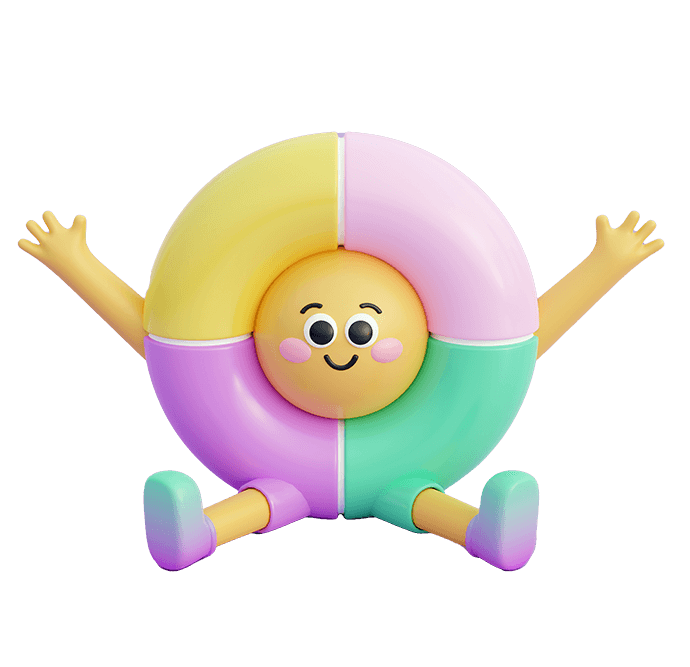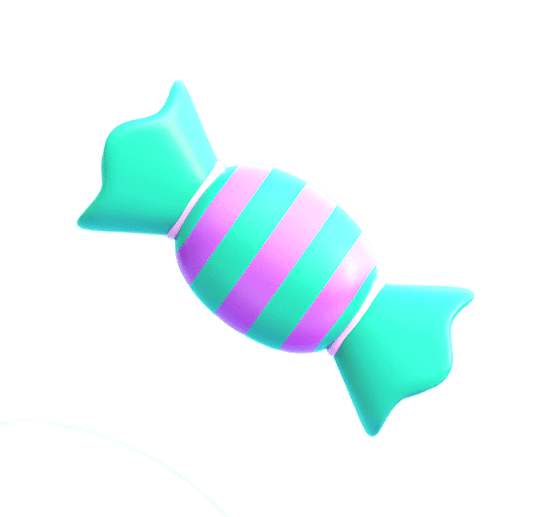Stuffed animals are more than just toys; they’re comfort objects, keepsakes, and often, childhood companions. From cuddling at night to being dragged around the house, stuffed animals go through a lot. Naturally, they need cleaning. But, can you wash them? And, more importantly, can you do it without damaging them? In this guide, we’ll answer all your questions about washing stuffed animals, sharing the safest ways to clean them, and what to avoid.
Yes, you can wash stuffed animals, but the method depends on their material and design. To preserve their shape and quality, it’s important to use the right techniques, whether you’re machine washing, hand washing, or spot cleaning.
Imagine this: your child’s favorite stuffed bunny has become a little dirty after a day of play. You’d like to give it a wash, but you’re worried it might lose its shape or color. You’re not alone! Many people face this dilemma. So, how do you clean a stuffed animal without ruining it? Let’s dive into the best methods for cleaning and maintaining your stuffed animals.
1. What Happens if You Wash a Stuffed Animal?
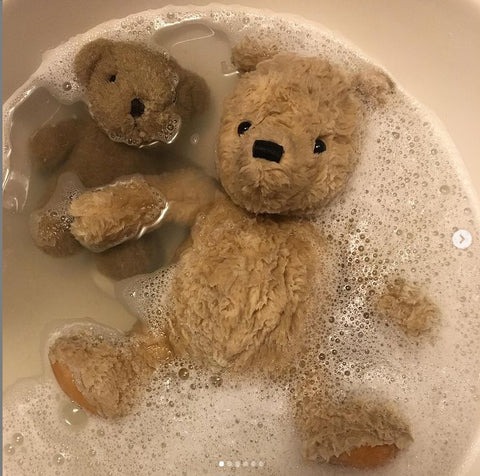
Washing a stuffed animal improperly can cause shape distortion, color fading, and damage to the stuffing. It’s important to follow the right methods to prevent these issues.
Stuffed animals can be delicate, and washing them in the wrong way can lead to some unwanted consequences:
- Shape Distortion: The agitation from a washing machine can bend or warp the stuffed animal’s shape, especially for those with a structured brim or face.
- Color Fading: Harsh detergents or high temperatures can strip the colors from fabric, leaving your stuffed animal looking worn out.
- Stuffing Issues: Improper washing can cause the stuffing to clump or leak, leaving your stuffed animal unevenly stuffed and lumpy.
With the right cleaning method, you can keep your stuffed animal looking fresh and fluffy without any damage.
- Why Shape Matters: Stuffed animals, especially those with faces or stiff brims (like hats), can lose their original shape if not washed properly. That’s why extra care is needed when washing plush toys or any item with a unique design.
- Color Preservation: Many stuffed animals are made with colorful fabrics that are vulnerable to fading. To avoid this, always use a mild detergent and wash in cold water.
| Edición | Lo que ocurre | How to Prevent It |
|---|---|---|
| Shape Distortion | Machine agitation can bend or warp the toy’s shape, especially with structured parts. | Use a mesh laundry bag and wash on a gentle cycle, or opt for hand washing. |
| Color Fading | Harsh detergents or hot water can dull bright fabrics. | Use mild, color-safe detergent and wash in cold water. |
| Stuffing Problems | Stuffing may clump, shift, or leak, making the toy uneven and lumpy. | Avoid over-agitating the toy and air dry instead of using a dryer. |
2. How to Wash Stuffed Animals Safely
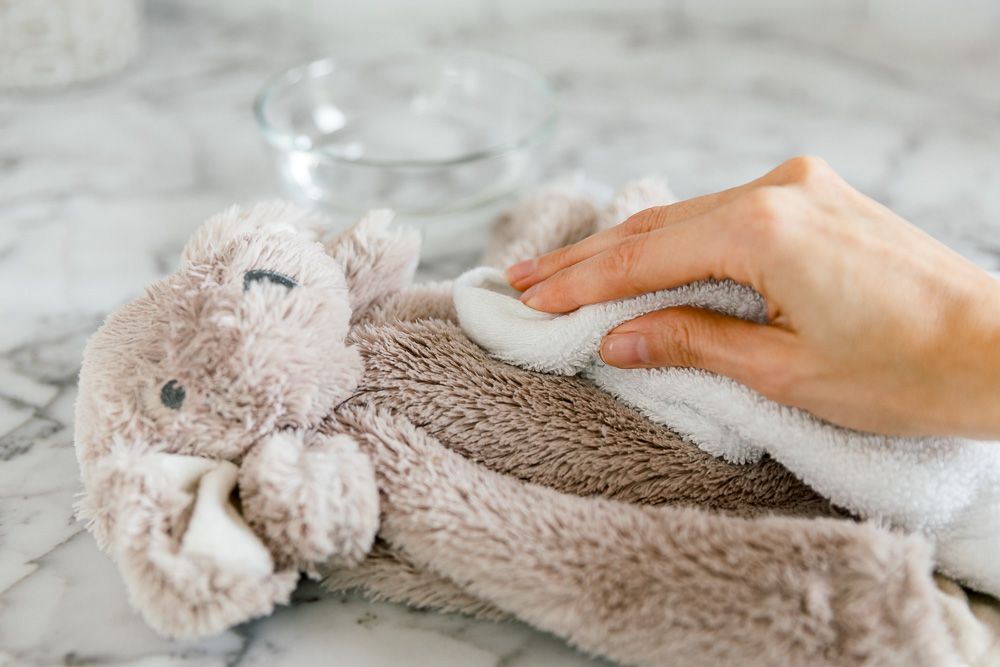
You can safely wash most stuffed animals by using gentle washing techniques, either by hand or in a machine with proper precautions like using a protective bag.
There are two main ways to clean stuffed animals: machine washing and hand washing. Here’s how to do both:
- Hand Wash for Delicate Stuffed Animals: Fill a basin with lukewarm water and mild detergent. Gently scrub the toy with a soft cloth or sponge. This method is perfect for delicate or vintage toys.
- Machine Wash with Protection: Place the stuffed animal in a mesh laundry bag to protect it from the harsh machine motions. Always wash on a gentle cycle and use cold water. This is a safe option for durable toys.
- Mesh Laundry Bags: These simple tools protect your stuffed animal by preventing it from tumbling around in the machine. They also help prevent excessive wear on the fabric, especially in delicate areas.
- Why Cold Water? Hot water can shrink the fabric or cause colors to bleed. Cold water is always a safer choice for washing stuffed animals, as it preserves both the fabric and color.
3. Which Materials Are Safe to Wash, and Which Aren’t?
Materials like cotton and polyester are safe for washing, but wool, leather, and electronics inside stuffed animals require special care or should be avoided.
The material of your stuffed animal plays a big role in determining how it should be cleaned:
- Cotton and Polyester: These materials are generally machine-washable and can handle the typical washing process without much issue.
- Wool: Wool is delicate and can shrink or lose shape if exposed to water. It should be hand-washed using cold water.
- Leather and Suede: These materials should never be washed in the machine. Use a damp cloth and mild soap to spot clean instead.
- Stuffed Animals with Electronics: Toys with electronics (e.g., talking or musical toys) should not be immersed in water. These should be spot-cleaned carefully with a damp cloth.
Material Cleaning Guide (Table):
| Material | Wash Method | Special Notes |
|---|---|---|
| Algodón | Machine wash, cold water | Can handle regular washing |
| Poliéster | Machine wash, cold water | Strong and durable, ideal for machine washing |
| Lana | Hand wash, cold water | Sensitive to heat, should be washed by hand |
| Leather/Suede | Spot clean with damp cloth | Avoid water; clean carefully |
| Electronics Inside | Limpiar sólo sobre manchas | Never submerge in water |
- Polyester’s Durability: Polyester is a synthetic fiber that holds up well in washing machines, which makes it ideal for machine cleaning. It resists shrinkage and fading, making it a reliable material for toys.
- Wool’s Fragility: Wool is natural and more prone to shrinkage or distortion. Even when hand washing, make sure to use cool water and a mild detergent to avoid damaging the fabric.
4. Do Different Types of Stuffed Animals Require Different Cleaning Methods?
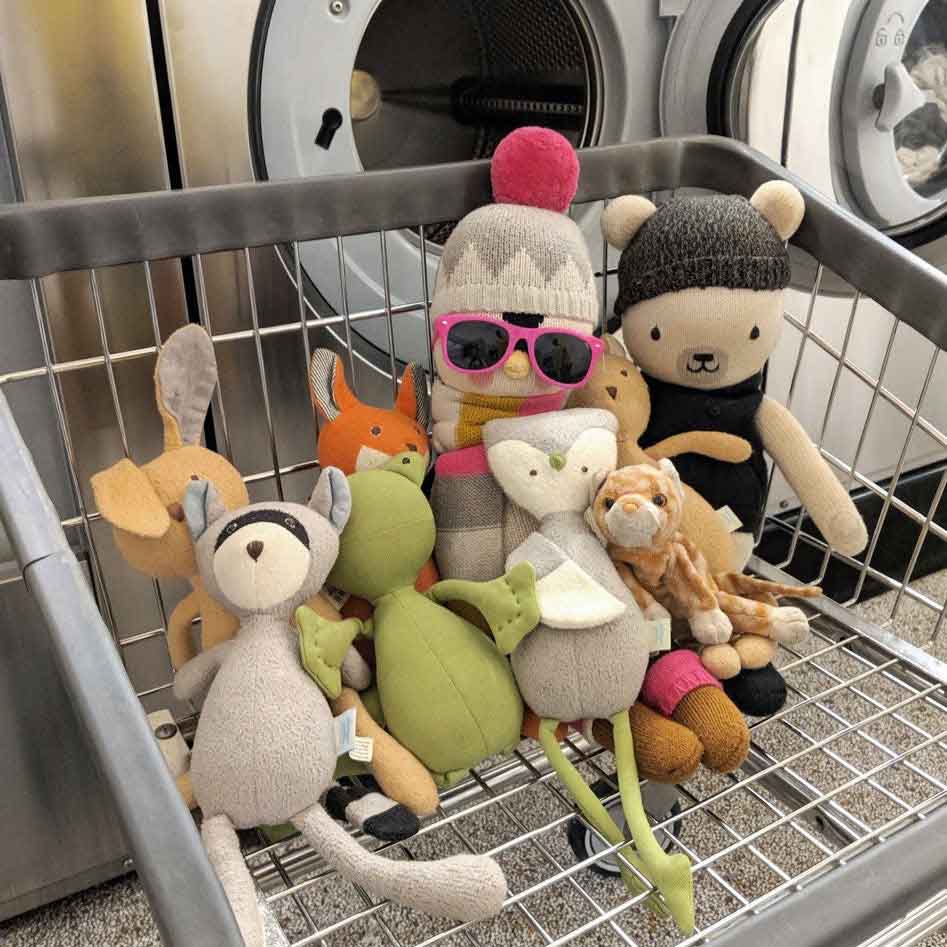
Yes, stuffed animals vary in design and material, so cleaning methods may need to be adjusted based on the type of toy you have.
Different types of stuffed animals often require different cleaning methods:
- Plush Toys: Most plush stuffed animals, made of polyester or cotton, are machine washable if done correctly. Use a gentle cycle and protect them with a mesh bag.
- Character-Based Toys: These may have more intricate designs or delicate materials. Hand washing or spot cleaning is usually recommended.
- Collector’s Items: Vintage or high-value stuffed animals, especially those with special fabrics or attachments, should never be machine washed. These should be professionally cleaned or spot cleaned with care.
- Plush Toys and Durability: Plush toys made of polyester or cotton fabrics are usually built to withstand more frequent washing. However, even these should be washed on a gentle cycle to maintain softness.
- Cleaning Collectibles: If you own a collectible or vintage stuffed animal, it’s worth investing in professional cleaning. These toys often have delicate fabrics or unique features that need special care.
| Stuffed Animal Type | Recommended Cleaning Method | Razón |
|---|---|---|
| Peluches | Machine wash on a gentle cycle in a mesh bag | Durable materials like cotton/polyester can handle gentle machine washing |
| Character-Based Toys | Hand wash or spot clean | Intricate designs and materials may be too delicate for machine washing |
| Collector’s/Vintage Items | Spot clean or seek professional cleaning | Delicate fabrics and high value require extra care to preserve condition |
5. How to Dry Stuffed Animals After Washing

Always air-dry stuffed animals to avoid heat damage. Use a drying rack or reshape them to maintain their form.
Drying is just as important as washing when it comes to stuffed animals:
- Air Drying: Lay your stuffed animal on a towel to absorb excess water. Allow it to air dry in a well-ventilated area, but avoid direct sunlight to prevent color fading.
- Avoid the Dryer: Never put a stuffed animal in the dryer, as the heat can shrink the fabric, damage the stuffing, or distort the shape.
- Reshaping During Drying: To maintain the stuffed animal’s original shape, gently reshape it while it’s drying. If your stuffed animal has a structured part (like a brim or hat), you can use a hat form or similar object to help preserve the shape.
- Drying Larger Stuffed Animals: For larger stuffed animals, drying time may take longer. It’s best to flip the toy periodically to ensure even drying.
| Método de secado | Instructions | Lo mejor para |
|---|---|---|
| Secado al aire | Lay flat on a towel in a ventilated area. Avoid direct sunlight. | All types of stuffed animals |
| Avoid Tumble Drying | Do not use a dryer—heat can damage shape, fabric, and stuffing. | Especially delicate or vintage toys |
| Reshaping While Drying | Gently reshape during drying. Use forms for structured parts like hats. | Toys with specific shapes or built-in features |
| Drying Large Toys | Flip periodically to ensure even drying. Allow extra time for full air drying. | Oversized or thickly stuffed animals |
6. Are There Any Alternatives to Washing Stuffed Animals?
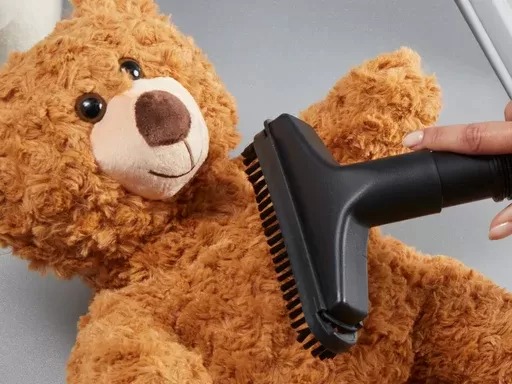
Spot cleaning, vacuuming, and using fabric fresheners are excellent ways to keep stuffed animals clean without a full wash.
If your stuffed animal isn’t very dirty, you can try cleaning methods that don’t involve full washing:
- Spot Cleaning: Use a damp cloth with mild detergent to clean specific areas, especially where dirt or stains have accumulated.
- Vacuuming: Use the upholstery attachment of your vacuum cleaner to remove dust and debris from the surface of the stuffed animal.
- Fabric Fresheners: A gentle spritz of fabric freshener can keep your stuffed animals smelling fresh without needing a full wash.
- Vacuuming for Dust Removal: Vacuuming is great for removing light dust and pet hair from your stuffed animal. It’s a quick and effective method for regular maintenance without needing to wash the toy.
- Fabric Fresheners: Spraying a mild fabric freshener can help remove odors, especially if your stuffed animal has been used frequently. Make sure the product is safe for delicate fabrics.
| Alternative Method | Cómo funciona | Lo mejor para |
|---|---|---|
| Limpieza de manchas | Use a damp cloth and mild detergent to clean specific dirty areas | Small stains, localized dirt |
| Aspirar | Use upholstery attachment to gently remove dust and pet hair | Light dust, surface debris |
| Ambientadores | Lightly spray with a safe, non-toxic fabric freshener to neutralize odors | Refreshing toys between washes |
7. Conclusion: Is Washing Stuffed Animals Worth the Effort?
Summary: Washing stuffed animals is possible, but it should be done with care. Spot cleaning or using alternatives is often the best option to keep them clean without risking damage.
In conclusion, while washing stuffed animals is possible, it’s not always necessary. By using the right cleaning methods—whether it’s hand washing, machine washing with precautions, or spot cleaning—you can maintain your stuffed animal’s appearance without causing harm. For delicate or valuable toys, consider professional cleaning services.
Ready for Custom Stuffed Animals? At Kinwin, we offer high-quality, customizable stuffed animals for all occasions. Whether you’re looking for plush toys, character designs, or unique custom pieces, we can bring your vision to life. Contact us today for a quote or to begin your custom order!

